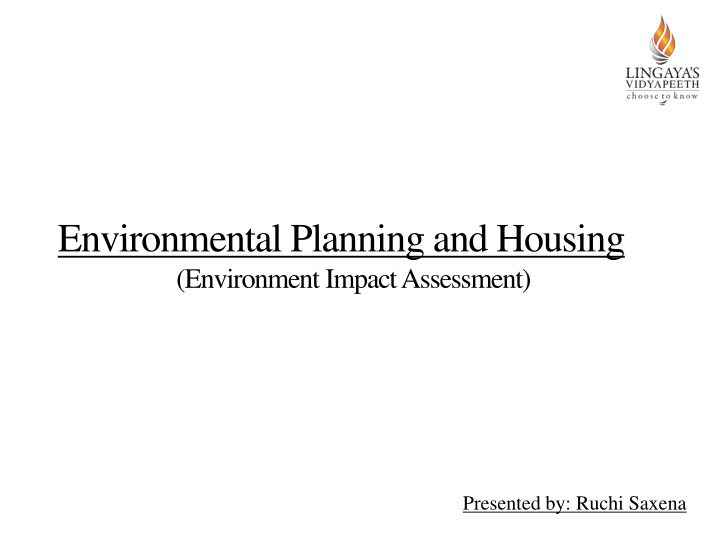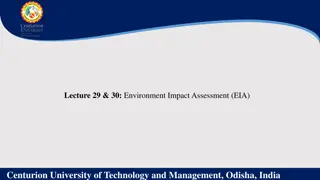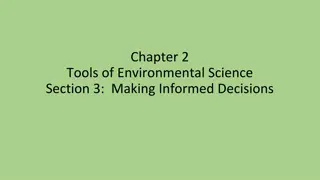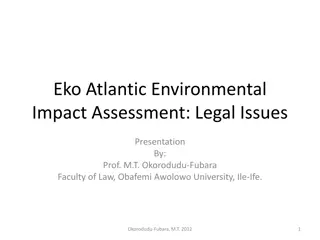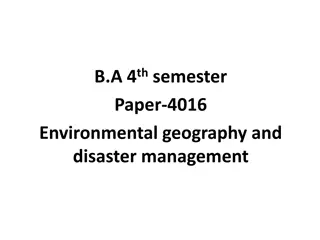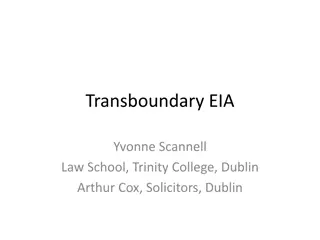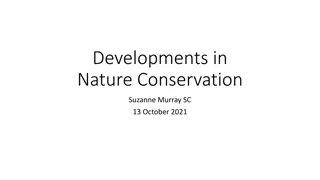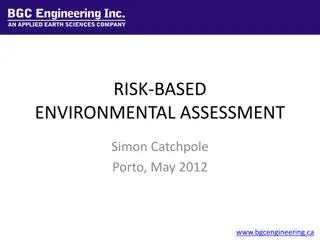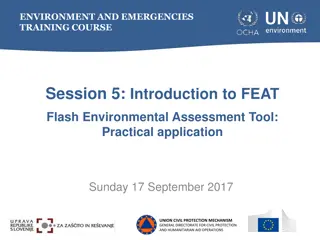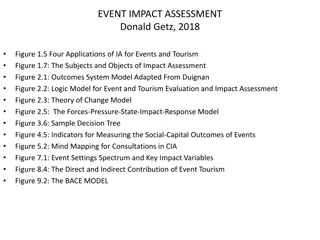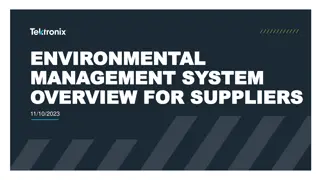Environmental Impact Assessment: Evaluating Project Impacts
Environmental Impact Assessment (EIA) is a crucial process that evaluates the environmental impacts of proposed projects, considering socio-economic, cultural, and human health factors. This assessment helps identify both beneficial and adverse impacts, ensuring sustainable development. The concept of EIA originated in the US in the 1960s, leading to the development of frameworks like matrices and networks to assess project actions and environmental conditions. Various methods like ad hoc approaches, expert opinions, and checklists are used in EIA to guide decision-making and promote responsible development practices.
Download Presentation

Please find below an Image/Link to download the presentation.
The content on the website is provided AS IS for your information and personal use only. It may not be sold, licensed, or shared on other websites without obtaining consent from the author.If you encounter any issues during the download, it is possible that the publisher has removed the file from their server.
You are allowed to download the files provided on this website for personal or commercial use, subject to the condition that they are used lawfully. All files are the property of their respective owners.
The content on the website is provided AS IS for your information and personal use only. It may not be sold, licensed, or shared on other websites without obtaining consent from the author.
E N D
Presentation Transcript
Environmental Planning and Housing (Environment Impact Assessment) Presented by: Ruchi Saxena
Environmental Impact Assessment (EIA) is a process of evaluating the likely environmental impacts of a proposed project or development, taking into account inter-related socio-economic, cultural and human- health impacts, both beneficial and adverse.
Increasing realisation of adverse impact on environment by various projects in the early 1960 s US was the first country to develop a system of Environmental Impact Assessment (EIA). The National Environmental Policy Act (1969) of the United States of America (NEPA) was constituted and for the first time, EIA requiring environmental consideration in large scale projects was enforced as legislation. In India, First EIA were of river valley projects (Late 1970s) Officially, EIA Notification in 1994
Some Methods of EIA Ad Hoc Method Expert opinion, Usually not recommended, Subjective Checklists- Listing Potential Environmental Impacts Simple, Descriptive, Scaling, Questionnaire
Matrices Framework of interaction of different actions/activities and Environmental impacts. Pioneered by Leopold (1971). 100 project actions and 88 environmental conditions. Magnitude from 1 to 10. Positive if beneficial
Network- In form of a tree, Relevance/Impact tree/Sequence diagram, Can become overly complex Overlays Overlay of maps covering physical, social, ecological aspects etc.
